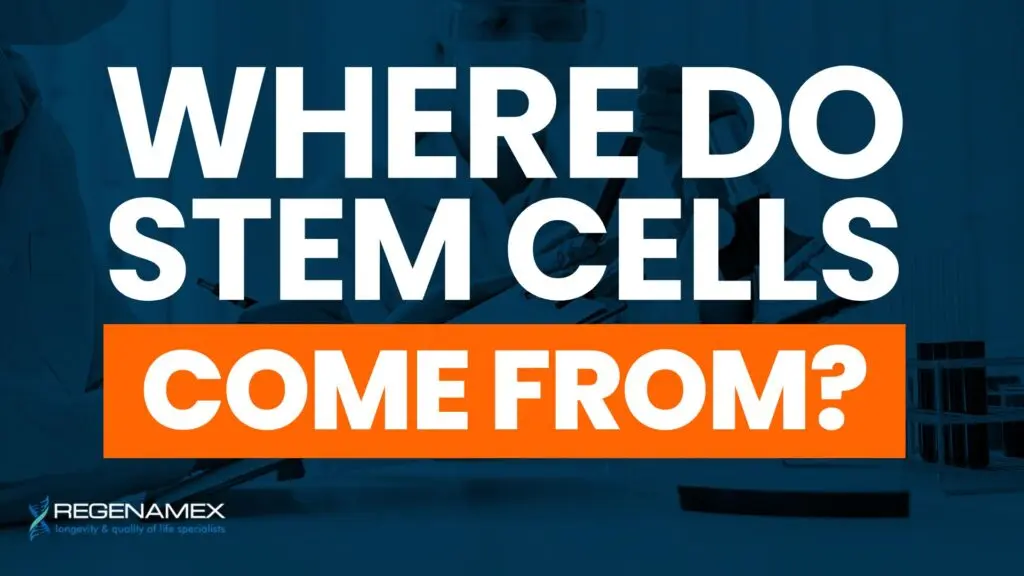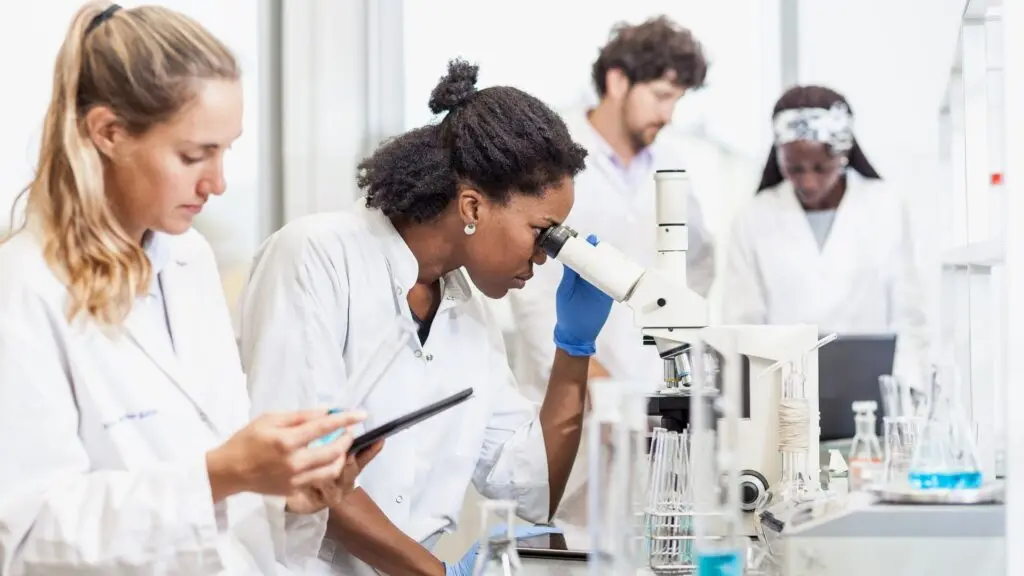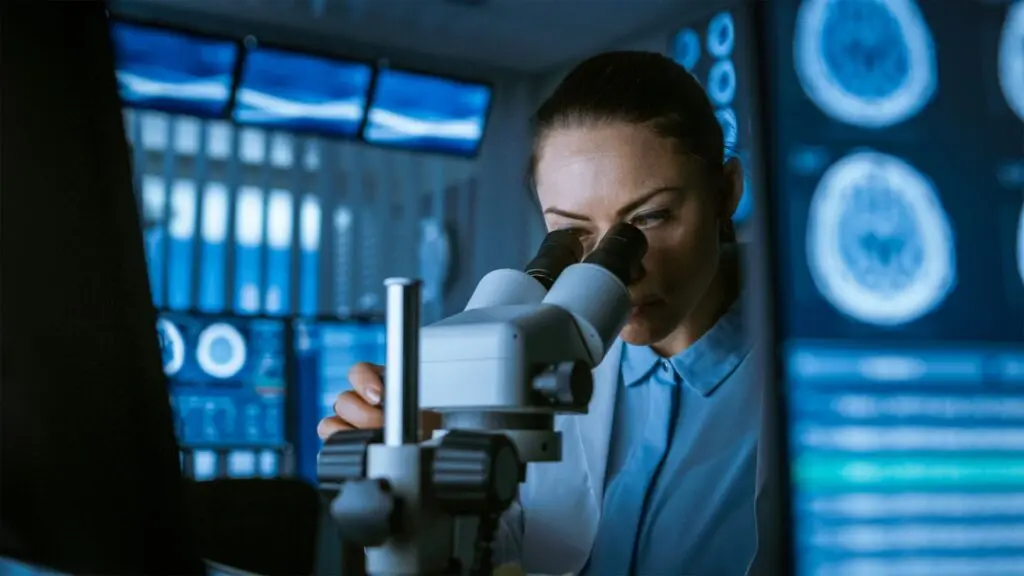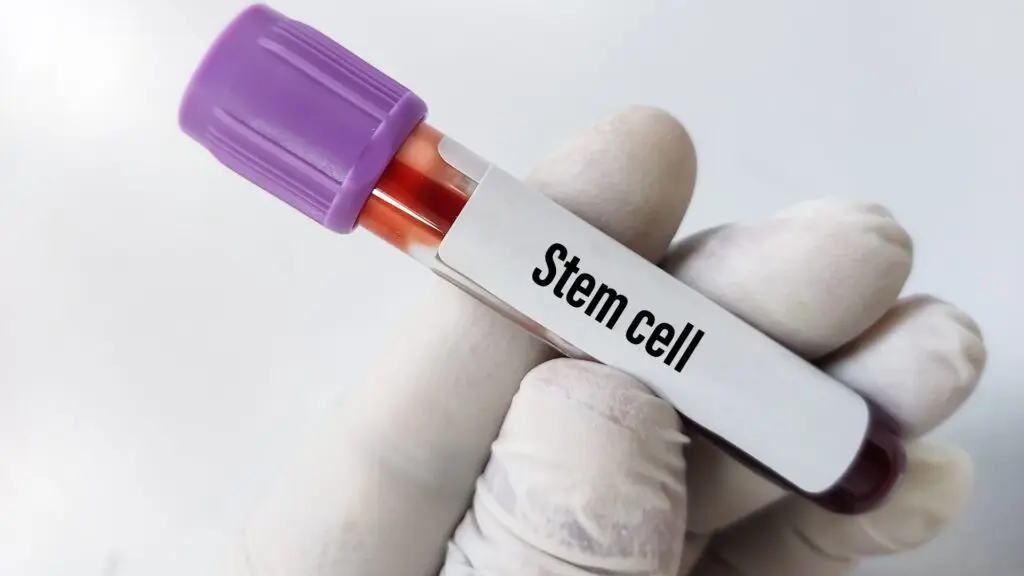
What Is “Where Do Stem Cells Come From?” and How Does It Work?
Understanding where stem cells come from begins with recognizing that these are undifferentiated cells capable of developing into various cell types in the body. They serve as a repair system and play a vital role in healing by regenerating damaged or diseased tissue. Stem cells can be harvested from multiple sources. These include embryonic sources (which are ethically controversial), adult tissues such as bone marrow and fat (which often require invasive procedures), and perinatal tissues such as the placenta and umbilical cord specifically Wharton’s jelly.
In regenerative medicine, mesenchymal stem cells (MSCs) are highly sought after for their ability to reduce inflammation, modulate the immune system, and promote tissue repair. Regenamex exclusively uses MSCs from Wharton’s jelly and placental tissue, which are collected from healthy, full-term births. These stem cells are young, potent, and immunoprivileged, meaning they are unlikely to cause immune rejection. When introduced into the body through intravenous or localized injection, they migrate to injured or inflamed areas and begin the process of cellular regeneration—reducing pain, restoring function, and helping patients avoid invasive surgeries.
Who Benefits from “Where Do Stem Cells Come From?”

Understanding where stem cells come from is more than a biological curiosity it plays a vital role in who can benefit most from regenerative medicine. Patients with chronic, degenerative, or autoimmune conditions often find themselves at a crossroads when traditional medications fail or lead to side effects. For these individuals, knowing that Regenamex sources mesenchymal stem cells (MSCs) from Wharton’s jelly an abundant and ethically derived part of the umbilical cord—can bring confidence and hope. These cells are known for their ability to reduce inflammation, modulate immune function, and support tissue repair, making them ideal for treating autoimmune conditions like lupus, Hashimoto’s thyroiditis, and multiple sclerosis. Orthopedic patients dealing with joint pain, meniscus damage, or degenerative disc disease have also found significant improvement. Furthermore, neurological conditions such as Parkinson’s disease and ALS, as well as metabolic issues like diabetes, may respond positively to the regenerative and neuroprotective effects of MSCs. Chronic pain syndromes like fibromyalgia or CRPS also fall within the spectrum of benefits. The fact that these cells are harvested without harm collected only from healthy, full-term births adds a layer of ethical comfort that many patients are actively seeking today.
Results You Can Expect with “Where Do Stem Cells Come From”

When people ask where do stem cells come from, they are often trying to understand how their origin influences results—and rightly so. Wharton’s jelly MSCs, when administered by a qualified clinic like Regenamex, offer a regenerative response that unfolds gradually but meaningfully. The typical healing timeline starts with reduced inflammation and pain within the first few weeks, often accompanied by improved mood and energy levels. Around the two-month mark, patients report improvements in mobility, flexibility, and in cases involving neurological conditions, better cognitive clarity and nerve function. By four to six months, the body’s healing momentum continues, with patients often enjoying greater physical endurance and lasting relief from long-term symptoms.
These outcomes are supported by a growing body of clinical research that shows how MSCs not only repair tissue but also reduce autoimmune aggression and enhance overall cellular communication. This is especially important for patients dealing with systemic inflammation or degenerative disease. The effectiveness of the treatment is closely tied to the source of the cells—Wharton’s jelly provides young, highly viable MSCs, which offer a consistent and powerful therapeutic effect. At Regenamex, we see firsthand how understanding stem cell origin translates into more confident, informed, and successful patient outcomes. For a full look at how these protocols are managed, you can visit our stem cell therapy in Mexico clinic guide.
Why Mesenchymal Stem Cells from Wharton’s Jelly?

One of the most compelling answers to where do stem cells come from lies in the distinct advantages of Wharton’s jelly as a stem cell source. This gelatinous tissue, located within the umbilical cord, is naturally rich in mesenchymal stem cells that are young, undamaged by aging or disease, and biologically active. These MSCs are capable of differentiating into cartilage, muscle, nerve, and even bone cells—making them incredibly versatile for therapeutic use. Unlike stem cells taken from bone marrow or adipose tissue, Wharton’s jelly MSCs don’t require invasive harvesting, which means patients are not subjected to surgical procedures just to extract the cells. Even more importantly, their immunoprivileged status dramatically reduces the chance of rejection or inflammatory complications after treatment. At Regenamex, our decision to work exclusively with Wharton’s jelly and placental MSCs is backed by both science and ethics. We do not use fat-derived or bone marrow-derived cells, which can carry inflammatory baggage or decline in regenerative power due to age. Patients deserve the highest quality care, and by using Wharton’s jelly MSCs, we provide consistent results with minimal risks. Our About Us page explains more about our clinical standards and the ethical sourcing protocols we follow to ensure each treatment is both safe and effective.
How the Treatment Is Performed

Once patients become aware of where stem cells come from and opt for Regenamex’s advanced approach, the natural next question is what to expect from the actual treatment. Our process is comprehensive yet streamlined to accommodate both local and international patients. It begins with an in-depth medical consultation to understand the patient’s full health history, current condition, and goals for therapy. From there, a personalized protocol is crafted, determining the optimal number of stem cells—typically between 1 million to 5 million MSCs per kilogram of body weight. These cells are then delivered via one or more of the following routes: intravenous (IV), local joint injection, or intrathecal (spinal) injection depending on the condition being treated. Patients generally remain at the clinic for 4 to 5 days, during which time our staff provides attentive care and post-procedure support.
After the procedure, patients are equipped with personalized follow-up instructions that may include physical therapy, nutritional guidance, and supplements to enhance the therapy’s effectiveness. Many patients begin to notice improvements in symptoms within weeks and continue to heal for several months. The minimally invasive nature of Wharton’s jelly MSC therapy means there’s very little downtime, and patients are able to resume light activity almost immediately. For a step-by-step look at what happens during a Regenamex visit, we invite you to review our full stem cell therapy overview, which includes travel logistics and patient FAQs.
Frequently Asked Questions About Where Do Stem Cells Come From
The question “where do stem cells come from” refers to the origin of these powerful regenerative cells and how their source influences their therapeutic capabilities. Stem cells can be harvested from several places—adult tissue such as bone marrow or adipose (fat), embryonic tissue (which raises ethical concerns), and perinatal sources like the umbilical cord. At Regenamex, we use mesenchymal stem cells (MSCs) derived specifically from Wharton’s jelly and placental tissue. These young, potent cells are ethically obtained from healthy, full-term births, and are known for their remarkable ability to modulate the immune system, reduce inflammation, and stimulate the repair of damaged tissues. When these cells are introduced into the body, they migrate to areas of injury or inflammation and begin to orchestrate healing at the cellular level. This mechanism allows Regenamex to help patients recover naturally—without relying on pharmaceuticals or surgery. For a deeper dive into how stem cells function at Regenamex, we recommend visiting our about us page.
For many people exploring regenerative medicine, knowing where stem cells come from isn’t just a scientific question—it’s also an ethical one. The safety and morality of stem cell therapy depend greatly on how and where the cells are sourced. Regenamex only uses Wharton’s jelly and placental-derived MSCs, which come from umbilical cords donated voluntarily by mothers following healthy, full-term births. This process involves no harm to mother or baby and bypasses the controversial use of embryonic stem cells. Furthermore, because these cells are young and immunoprivileged, they carry a much lower risk of rejection or adverse immune reactions compared to older, fat-derived or bone marrow-derived cells. By focusing exclusively on ethically obtained, high-quality stem cells, Regenamex has built a reputation for safe and transparent care. You can read more about our sourcing practices and certifications in our stem cell clinic guide.
The timeline for seeing results after stem cell therapy varies from patient to patient, but there are some general patterns that many experience. Typically, individuals begin to notice a reduction in inflammation and an improvement in energy levels within the first 2 to 6 weeks. These early changes often include less pain, better mobility, and a more balanced mood. As the regenerative process continues, more noticeable improvements in joint function, cognitive clarity (in neurological cases), and physical endurance tend to develop between 2 to 4 months. By 6 months post-treatment, many patients report enhanced quality of life and sustained symptom relief. The healing response depends heavily on the patient’s overall health, the severity of their condition, and how well they follow post-care recommendations. Regenamex customizes every protocol based on the individual’s needs to optimize these results, whether for autoimmune disease, neurological conditions, or orthopedic concerns.
Among the many reasons patients choose Regenamex, our exclusive use of ethically sourced Wharton’s jelly MSCs is one of the most important. We do not use cells harvested through surgical procedures like liposuction or bone marrow aspiration, which can be painful and less effective due to age-related decline in stem cell potency. Instead, Regenamex specializes in treatments using young, vibrant cells collected from donated umbilical cords—ensuring high viability, consistency, and therapeutic strength. Our clinic is fully licensed and follows international quality standards, with a medical team that crafts personalized protocols for each patient. From concierge travel services to post-treatment support, we prioritize your comfort and outcomes every step of the way. Discover more about our philosophy and international patient care on our About Regenamex page.
Among the many types of stem cells available, mesenchymal stem cells from Wharton’s jelly are increasingly recognized as the gold standard in regenerative medicine. These cells are particularly effective because they are young, undamaged, and capable of modulating immune activity, reducing inflammation, and promoting tissue repair. Wharton’s jelly MSCs outperform adult stem cells taken from fat or bone marrow, which may carry age-related mutations and reduced functionality. At Regenamex, we use only these high-quality perinatal cells due to their consistent performance across a wide range of conditions. Whether you're dealing with arthritis, autoimmune issues, or chronic fatigue, our clinical outcomes reflect the superior potency of these ethically sourced cells.
Eligibility for stem cell therapy depends on a number of medical and logistical factors, including diagnosis, disease progression, and previous treatments. Most patients with chronic pain, autoimmune conditions, joint degeneration, or neurological issues are strong candidates for Regenamex’s Wharton’s jelly-based treatments. After an initial consultation and medical screening, our team develops a tailored plan that considers your goals, current medications, and health status. Those with progressive diseases like MS or Parkinson’s, which are featured on our condition-specific pages, often benefit the most, especially if treatment is started early. Patients who want to avoid surgery or have had limited success with medication are also good candidates.

